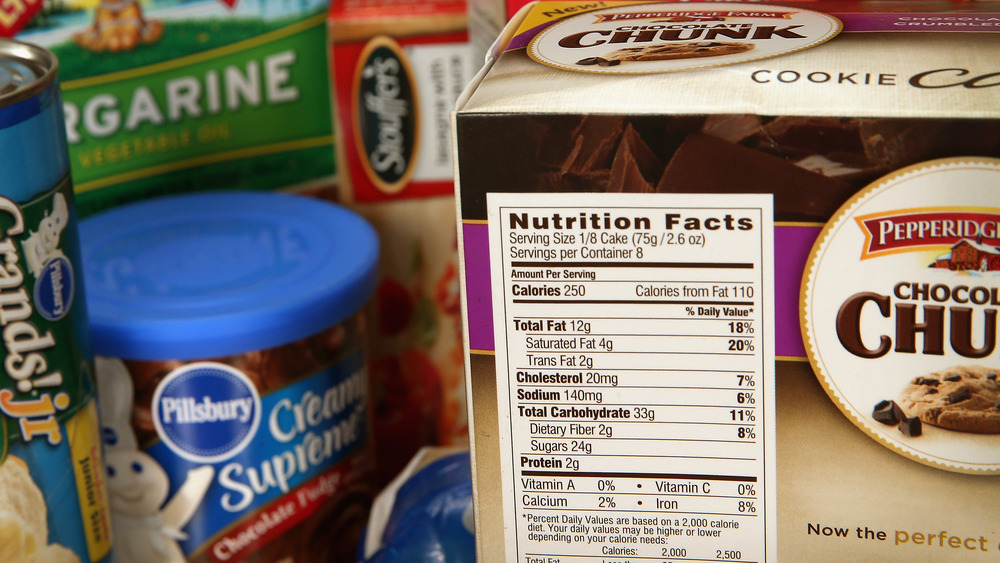What Are Trans Fats And Why Are They Bad For You?
For those who were kids growing up in the 1980s or earlier, memories of tubs of margarine and copious amounts of trans fat-laden Crisco are probably still sharp. It wasn't until the 1990s that scientists began to seriously investigate the negative effects of trans fats on human health.
The evidence piled up, and consuming trans fats is now know to be one of the worst things you can do for your health. They are associated with a host of problems, including an increase in 'bad' LDL cholesterol, a decrease of 'good' HDL cholesterol, blood vessel damage, and an increased risk of heart disease, stroke, and type 2 diabetes (via Healthline).
Trans fats come in two basic forms. They can either be naturally-occurring in full-fat dairy products and certain meat sources (like beef and lamb), or artificially manufactured through a chemical process by which hydrogen is added to liquid vegetable oils in order to make them more solid. Although the evidence isn't yet conclusive, naturally-occurring trans fats do not appear to be unhealthy when consumed in moderate amounts. There is some evidence that they may even be beneficial. The industrially-produced variety though, is toxic, hands-down.
Read nutrition and ingredient labels for trans fats
Tom Frieden, MD, MPH, former director of the Centers for Disease Control and Prevention, and president and CEO of Resolve to Save Lives, said "Trans fat is an unnecessary toxic chemical that kills, and there's no reason people around the world should continue to be exposed." (Via Prevention.)
If they're so bad for us, how did trans fats get to be so widely used in the first place? Well, they're cheap to produce, make foods taste better, and they offer convenience by significantly extending shelf life. Enough said.
In 2015, the FDA decided that it was time for trans fats to stop harming the general population, and gave companies until June 2018 to stop using them in their food products. There is a loophole, though. If a food product contains less than 0.5 grams of trans fats per serving, it can boast '0 grams trans fats' on its label (via Mayo Clinic). Since repeated small amounts can quickly add up, it's important to read both the nutrition label, making sure it contains 0 grams of trans fats, as well as the ingredient list. Anything that is listed as being 'hydrogenated' or 'partially-hydrogenated' is probably a trans fat.


